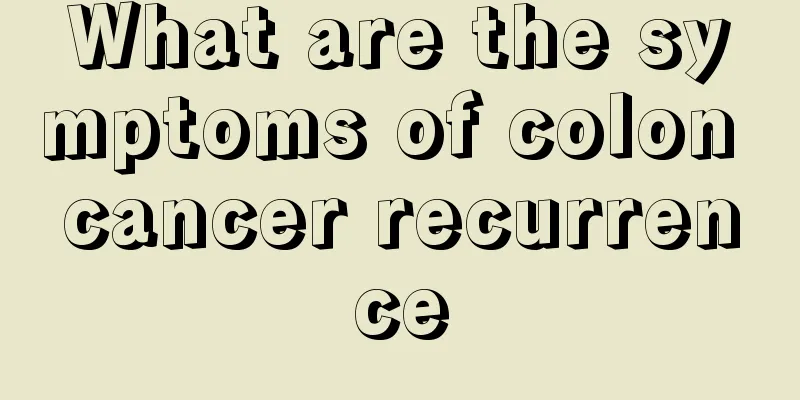Sequelae of liver intervention

|
Interventional therapy has many advantages, including less trauma, quick recovery and good results. In particular, it does not require surgery. With the help of catheters and guide wires, through puncture points the size of rice grains, it can treat many diseases that were previously impossible to treat or could only be treated through surgery. Liver intervention, as a type of interventional treatment, can diagnose and treat liver diseases such as liver cancer and hepatic hemangioma. 1. What is liver interventional therapy? Interventional therapy is the introduction of special catheters, guide wires and other precision instruments into the human body under the guidance of medical imaging equipment to diagnose and locally treat some liver diseases, including liver cancer, hepatic hemangioma, liver puncture biopsy, cirrhosis, portal hypertension, etc. 2. Nursing methods after interventional treatment of liver cancer 1. Observation of gastrointestinal reactions Gastrointestinal reactions after interventional treatment may include vomiting to varying degrees. Chemotherapy drugs can cause nausea and vomiting in patients. In addition, the intraoperative traction during interventional surgery and the reflex excitement of the vagus nerve caused by embolic agents can also induce nausea and vomiting. When vomiting, ask the patient to fast temporarily, lie on his side with his head tilted to one side to prevent vomitus from entering the trachea. At the same time, record the amount, color and nature of vomitus, eat small meals frequently, strengthen oral care, reduce adverse stimulation, and promote toxin excretion. 2. Observation of liver function damage After interventional treatment, patients may suffer varying degrees of liver damage due to factors such as liver ischemia and hypoxia, the effects of chemotherapy drugs, etc. After the operation, alanine aminotransferase and aspartate aminotransferase will increase to varying degrees, albumin will decrease, and some patients may have increased bilirubin, manifested as worsening jaundice and ascites. In severe cases, drowsiness and hepatic coma will occur. Patients with damaged liver function are advised to rest in bed more and ensure adequate sleep. Pay attention to changes in blood counts, keep warm, and prevent colds. 3. Nursing for abdominal pain After interventional treatment, pain in the right upper abdominal liver area may occur, usually 1 to 3 days after the operation and may be relieved on its own in 3 to 5 days. Closely observe the location, nature and degree of abdominal pain, and explain it to the patient to enhance psychological endurance. No special treatment is required for those with mild pain. For those with moderate pain, oral analgesics or intramuscular injection of diazepam can be given for analgesia. For those with severe pain, pethidine can be given for analgesia. 4. Care for fever Equipment must be strictly disinfected and sterilized, and aseptic operations must be performed. Antibiotics are used after surgery to prevent infection. If the body temperature is below 38.5℃, it will generally subside on its own within 5 to 7 days. If the body temperature fluctuates between 38℃ and 39.5℃, medication and physical cooling should be given for several days to prevent collapse due to excessive sweating, and patients are encouraged to drink plenty of water. 5.Diet care If there is no obvious nausea and vomiting after the operation, encourage drinking more water and give water supplements. Eat light, easily digestible semi-liquid food 1 to 3 days after the operation, in small meals. After a few days, if there is no stomach discomfort, you can eat fresh vegetables, fruits and nutritious foods. |
<<: Behaviors that harm the liver
>>: The difference between liver pain and gallbladder pain
Recommend
What are the benefits of sweating during exercise
Regular exercise will have many benefits for us. ...
What are the treatments for cerebral infarction?
Cerebral infarction is a common disease in the el...
What is the reason for pain in the index finger joint
Index finger joint pain is very common among olde...
What is the cause of insomnia in adolescence
Many adolescents will develop diseases due to som...
What to do with hip synovitis
One of the main causes of hip synovitis is the ac...
What's wrong with the pimple behind the ear
The skin behind the ears is very sensitive. But s...
Do I need to wash tea leaves?
In China, many people like to drink tea very much...
How to use oily shampoo
Oily shampoo is a shampoo used by people with oil...
The difference between blisters and burns caused by moxibustion
Generally speaking, there is a clear difference b...
Why does thyroid cancer cause a cold back?
Thyroid cancer may cause a cold back, which may b...
Is cyst serious?
Cyst is a relatively unfamiliar thing for many pe...
Brain cancer patients usually have mental abnormalities
Brain cancer patients usually have mental abnorma...
What are the dangers of a large cervical bump? Causes of cervical lumps and their elimination methods
The cervical lump, commonly known as the "we...
The effects and benefits of moxibustion on the navel
Moxibustion, a traditional Chinese medicine metho...
How to identify whether pink mushrooms are poisonous?
Mushrooms are a type of edible fungus that we oft...









